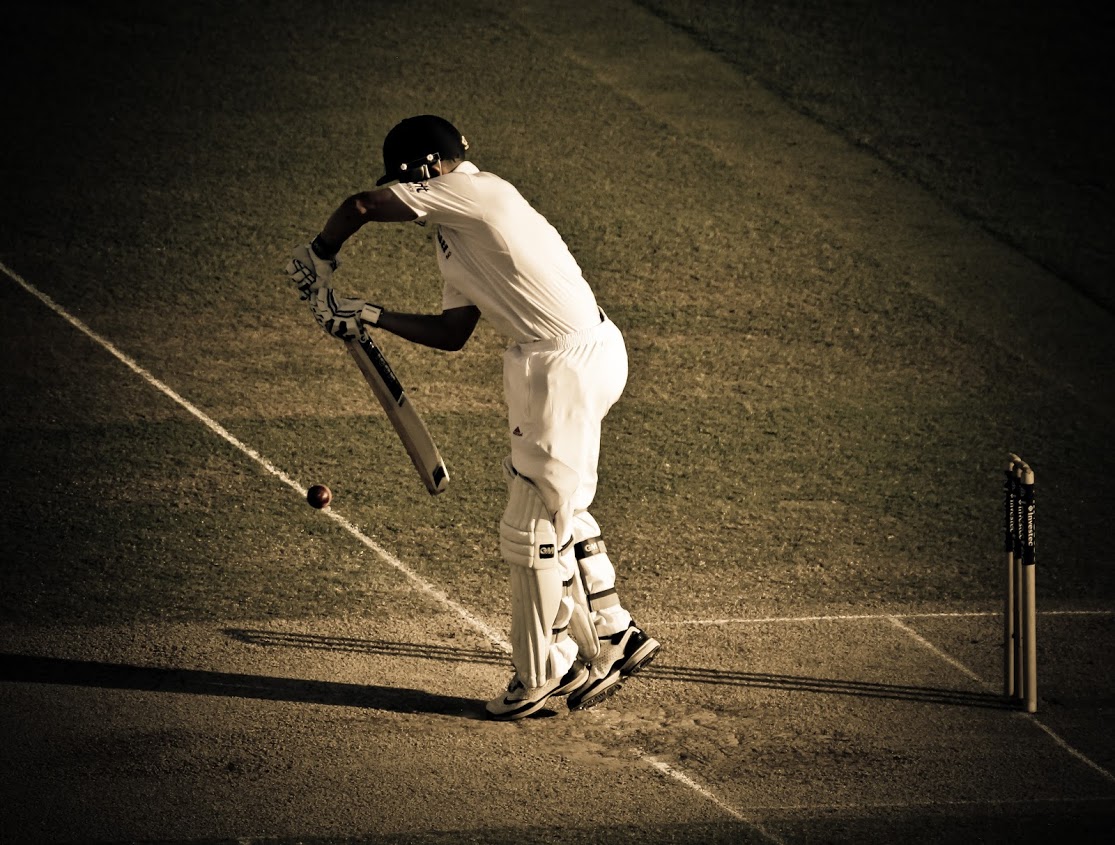India have won the second Test in Chennai, and it is 1-1 going into the pink ball Test at the colossal new stadium in Ahmedabad in ten days’ time. The outcome of the Test must make Indian fans happy (me included), as it sets up the series beautifully and gives Team India a chance to extend their dominance at home, where they have not lost a series since 2012. However, the nature of the wicket on which it was achieved, coupled with the debates about its quality, somewhat take the gloss of it.
The wicket in question has been described as “a rank turner”, “not an impossible pitch to bat on”, “a Bunsen burner” and “a wicket which needed application from the batsman” by different people, mostly depending on the team for which they were rooting. Whilst unsurprising, the partisan reactions to the pitch should not dissuade one from having a meaningful conversation about it.
Personally – sidestepping the question of whether it should actually be rated “poor” – I thought the Chepauk pitch used for the second Test was disappointing. Turning, and turning square, from the first session of Day 1, sent the signal that the current Indian team, for all its recent resilience abroad, is not above seeking advantage from the 22-yard turf in a home series, especially when they are playing catch up. I am not sure whether anyone from the team management was actually in the curator’s ear after the first Test. Regardless, the second Test was played on a wicket that definitively favoured India in my opinion.
Rohit Sharma’s masterful 161 in the first innings and Ravichandran Ashwin’s adventurous 106 – from no. 8 – in the second have been adduced, unsurprisingly, to support the view that the pitch was not remotely as hostile to batting as some English pundits have pointed out. Though the argument looks sound to start with, it ignores the reality that, as home batsmen, the centurions would be more familiar with such pitches from domestic cricket and would therefore be better equipped to handle it.
On the other hand, the visiting batsmen, some of whom are in India for the first time, had to become familiar with the wicket while also trying to keep the scoreboard moving – a difficult task at the best of times, but a daunting one when at least two balls every over might have your name on it. England were set up to fail, and they failed.

The defence of the pitch from the Indian side – and I don’t mean just the team – has been a classic but overdone piece of schadenfreude: when we visit South Africa or England or Australia, we get green tops or trampolines and we are expected to shut up and play, so teams visiting India must…and so on and so forth. The drift of the defence, however, reveals the real problem with Test match pitches: home advantage, which all teams increasingly think they are entitled to enjoy. Presumably, this sense of entitlement puts pressure – directly or indirectly – on pitch curators to produce strips which guarantee home bowling attacks the maximum chance of success.
It would be naïve to suggest that every pitch on which Test cricket is played should be equally ‘friendly’ to the two teams on the park. If taken seriously, such a suggestion would warrant drop-in pitches across the world, eliminating a key test from Test cricket – the variety of environments in which a player gets challenged. Nor are captains going to shed overnight the win-at-all-costs-mentality, a burden most modern sportsmen are cursed to carry, and ask curators to prepare the best wickets they can with the wherewithal they have, keeping the good of the game in mind. Doing away with the toss is an idea that has been considered for a while, but even that may not always be enough to level the playing field.
The only solution to the problem seems to lie therefore in making pitch curators autonomous, empowering them to be independent, and encouraging them to prepare wickets which, while faithful to the soil of a place, do not, by design, help or hamper the performance of the opposition or the home team. This is obviously a task for the ICC, for it cannot be entrusted to national boards, whose power, prestige and purse-strings depend on the success of the teams which represent them. Seeing as the autonomy of the ICC itself is theoretical at best, however, I don’t see how Test match pitches are going to become cricket-friendly any time soon.
Srinivas S









Good piece. England’s difficulty handling spinning conditions is self inflicted. The ECB regard the preparation of turning tracks as a sin, as witness their punishment of Somerset for doing so. The result is that 90% of the time in England the pitch is either an absolute road on which folk boost their batting averages or a green top – I can remember a Swansea pitch where the greenness of the surface was obvious from the stands, never mind close up. The visitors on that occasion replaced veteran off spinner Hemmings with an extra pacer after one look at that pitch. I do not believe that a pitch that produces puffs of dust on day 1 is a good surface, but to use it as an excuse for a dismal performance by England is ridiculous. India batted better, and even more crucially, bowled massively better for the conditions than England did.
It a bit hard on England by comparison, as if you take Rohit and Ashwins innings out the rest of the Indians amassed les than 200 between them in each innings, which would certainly have made a game of it.
It always used to annoy me with Sobers. When any side he played for batted, the pitch had clearly been prepared for that, and then, in the interval between innings, the pitch was clearly doctored to suit his bowling !
Very good article. The idea of pitch curation sounds like a good one. You could also have penalties imposed for pitches which did not meet the required standards. At the same time, you don’t want a one pitch fits all system as one of the joys of international cricket is watching different teams adapt to local conditions.
Nobody in the England set-up has any right to complain about the pitch and, to be fair, they haven’t. Neither has any one in the English media unless they have a clear track record of criticising England for doing the same and there the record is predictably not so glorious.
I’ve pointed out previously that my main objection is that a pitch like this makes the toss too important. Further objections are that they make it very likely the match won’t gone into the fifth day and they reflect how most boards only care about their home games now. Boards only care about their home games because they get to pocket that revenue and can trumpet their own genius. Only hard-core fans seem to pay much attention to what happens in the off-season. Away teams must get a sizeable minority of revenue from series – who blocks that but the teams with revenue lucrative home series?
ICC-contracted groundsman would be the solution if I had any confidence in the ICC.
Well yes, but I would much rather watch a Test on a helpful wicket, shall we say, rather than a flat 5 day bore draw, that is like a 5 day version of a one day game, 500 vs 500 and the like.
England’s problems are far more deep seated though aren’t they: it’s been said repeatedly, but the ECB’s “policy” of a diet of endless T20 and soon the dreaded 100 between June- August when pitches are far more suitable for developing spinners, and giving batsmen the opportunity to play them on more useful surfaces. Ok it won’t be like the sub continent, but having as this year only 2 four day CC games in this 3 month period does no good at all. I don’t blame our bowlers or batsmen, but the money driven system frankly stinks as much as the ECB.
The last match reminded me that the pitch was similar to ones when matches were played on uncovered pitches, albeit that this pitch was like it from day one. The main reason England suffered was that most of them are so used to playing on flat pitches and have become accustomed to these especially in the short form of the game so they have not adapted or mastered the necessary skills when faced with more difficult surfaces. Like Doug, I don’t necessarily blame the players as they do not get to play under these conditions and nor do our spinners get to operate during the better times of the season at home. If the ECB wants to improve the national team in away series against the top rated countries, they should do more. Obviously, this works in reverse when other countries tour England and often suffer the same situation with English pitches.
Interesting figure in today’s Daily Telegraph – since 2015, only 23% of overs in UK first-class cricket have been spin – the lowest of any country. Is it any wonder our batsmen are all at sea against it?
With little or no time to acclimatise to conditions a poor playing surface didn’t exactly help matters, though its the same for both sides and we’d just come from Sri Lanka, whereas they’d just returned from Australia and much more alien conditions. Our inability to put partnerships together and get tail Enders out is a consequence of lack of adaptability and talent, especially amongst our spinners. This was not helped by having Archer injured, resting Anderson, (who by his own admission is fit as a fiddle) our 2 main threats and not using Stokes for some reason, as apparantly he is fit, though he seemed to be limping after his couple of overs. He is a worry as he’s had a number of fitness issues with his bowling recently and the hard ground out there won’t help that.
If you go into a test against the best in the world in those conditions with 4 county standard bowlers and Broad what do you expect. Also with a top 3 lacking any experience over there, leaving Bairstow, who played with great maturity in Galle, on the sidelines, the omens were never going to be good.
Hopefully our main threats will be back for the next test and Bairstow can come in for the out of his depth Burns. I’d keep Broad in and just play 1 spinner. Its the old adage of play your best against their best. I don’t see the point of playing 2 spinners if neither can pose a real threat. At least Leach can tie an end up and be a wicket taker later on. Bess is a disaster area at the moment and Root has clearly lost confidence in him. All this should help to even up the odds.
A nice article on the preparation of neutral pitches. But in reality no home team wants to be defeated at their own home turf. This has been going for time immemorial. The Boards also want to play to their players sentiments. And it’s not immediately going to change in the near future. And when Greentops are seen in England or S.A. noone raised voice and only when square turners at sub continent pitches help the home team this question is raised. Why the partiality ? Let the ICC flex their muscles with Cricket Boards and arrive at a solution which is easily said but not a pragmatic solution. So till such time v can only voice such opinions.
I liked the pitch, because it gave Ben Foakes the opportunity to showcase his skills. His keeping was amazing to watch. Hopefully he will get to play more for England after this series.
Also I note that both Monty Panesar and Graeme Swann have spoken in defence of the pitch …
Personally I think that England has lead the way on this. You only have to think back to Nottingham 2015 to see what happens when England wants a win and I remember being in shock at the Oval in 2013 when they said over the loudspeakers at the ground that the groundsman was retiring and congratulated him on providing pitches for many “great England victories” – Seemed to be a blatant recognition of the situation. Would have thought that “exciting Test Matches” might have been the more correct way to congratulate a groundsman.
Not that any country is immune to this but England as probably in the top offenders bracket probably should stop complaining when it happens to them.
Instead they should scrap the toss and get the away team to have the choice. This will help ensure that fairer wickets are prepared.